Ky Furneaux, 40, doesn’t work your typical 9 to 5 job. In fact, her job isn’t typical at all! It was while she was working as an outdoor guide in Australia, when someone suggested that she be a Hollywood stuntwoman. Ky loved being active so the gutsy career change seemed like the perfect challenge. She was on the next flight to Vancouver (Hollywood North, as it was known) and after a year of hard training, she landed her first stunt job.
Though the ending is happy, there is much more to Ky’s story of success than meets the eye. At the young age of 19, she was in a car accident that fractured her spine. Yet, the injury that could have ended her career before it began actually did the opposite. Spending so much time indoors, struggling to recover, Ky realized that she could never work a typical office job.
Being a stuntwoman means putting your safety on the line on a daily basis, but Ky wouldn’t have it any other way. The variety and flexibility of the job make it all worth it. Though her job description may be daunting, she offers practical advice to young women starting their careers in any field: set smaller goals to help achieve the big picture. “Everest is climbed one step at a time,” she says, “try to do something every day that moves you closer to your goal.”
Her Starting Point
Tell us about your journey to becoming a Hollywood stuntwoman. What about being a stunt person sparked your interest?
I was an outdoor guide in Australia and loved being active and challenging myself in physical situations. When I was about 26, someone suggested that I should be a stuntwoman and it sounded interesting. It sounded challenging, fun, different every day, physical and like a huge adventure. I packed my bags and headed to Vancouver, which was known as Hollywood North at the time.
I hadn’t realized exactly how difficult the process would be. I didn’t have any hard skills that would make me an asset on a set, so I started training martial arts every day and picking up whatever skills I could from the local stunt community. I worked on sets as an extra to gain set experience and to meet the stunt coordinators and kept a positive attitude. After a year of giving it everything I had, I was fortunate enough to pick up my first stunt job.
At 19, you were in a car accident that left you with a fractured spine. How did the accident impact your career goals? What did you consider doing before the accident and how did that change after you sustained your injuries?
Before the accident, I didn’t really know what I wanted to be. I had a talented sister who was doing really well in business and a mum who had dreams of me following in her footsteps. I finished my last year of high school and mum basically enrolled me in the business course. I went along with it for lack of a better idea. I thought perhaps I would be happy as a creative on a marketing team or something along that line.
After spending so much time indoors and inactive after the accident, I realized that I could never do an office job and by the time I had recovered, I had set my aspirations on being an outdoor guide.
You worked as an outdoor team leader for Venture Corporate Recharge, an adventure-based learning program in Australia, for over seven years before becoming a stuntwoman. How do you use the skills you learned there in your work as a stuntwoman?
The biggest skill sets that I transferred from being an outdoor guide to stunts would probably be the mental ones. As an outdoor guide you need to be concerned about the safety and comfort of the group over your own wants and needs. I learned to block out my pain and discomfort until everyone else was taken care of. I also learned just how far you can push your body in physical situations. So often we think we have reached our limits when we actually have so much more we can give.
As a stunt performer you are employed to do a job that can result in physical harm. At the very least, most days I have bruises. I believe that you stay until the job is done if at all possible, so I ignore my pain and discomfort and do the stunt until the director is happy with the footage. I also know if I am tired from 20 takes of a fight scene or a 16-hour day, I still have it in me to finish the day. Once, I broke my shoulder on the second take of a shot. I did that shot six more times, landing on that shoulder because the director felt like the camera angles weren’t capturing the shot perfectly. I’m sure he would have stopped asking for takes if I told him I had a broken shoulder—I just didn’t tell him.
Another transferrable skill is the problem solving aspect of being an outdoor guide. No two days are the same, even if you are doing the exact same trip. There are so many variables in the outdoors that you are constantly faced with new situations that require a bit of problem solving to get the best possible outcome. Stunt life is like that, too. The director has a vision and, between you and the stunt coordinator, you have to come up with the best possible way to match that vision.
Although you did not physically attend college, you completed a business degree from your hospital bed. How has that helped you as a stuntwoman and in your other career endeavors?
I completed my business degree in the college, but with a special desk that allowed me to lie down and still take notes (this was before laptops). I was only allowed to sit for a limited amount of time a day and that was taken up by the car ride to college (chauffeured by my dad who took time off from work to look after me).
I have used my degree with everything I do. I treat myself as the business and try to make good decisions about my career in that way. I am always marketing myself and managing my image as I would a business with a storefront. I take time to invest in myself and my skills to make sure that I am saleable, and I don’t take unnecessary risks that could put me out of business.
Her Big Break
Although many people have heard the job title “stuntwoman,” most people associate it with driving fast cars and jumping off of buildings. Could you tell us what it really entails?
Basically a stunt performer is brought in any time an actor has to do something physical that may result in injury. This can be as simple as a punch in the face or tripping over something, to something as extreme as falling off a building or getting blown up.
Insurance doesn’t want to cover what would happen with production if the actors are injured in any way. Even a cut on their face can be hard to cover up and may result in days where the crew is getting paid, but no filming is happening. It is much easier to replace them with someone else of the same size and shape if they are injured. That’s not saying that the actor doesn’t then choose to do the stunt if it is deemed safe enough, but we are standing by to test it, manage the risk and, if need be, step in and do the stunt.
Stunt people also are brought in if a particular skill is required that an actor doesn’t have or that an actor can’t learn in a short amount of time—ninja martial arts skills or Formula One racecar driving experience, for example.
We’re dying to know—what’s it like to work as the stunt double for celebrities like Sharon Stone, Anne Hathaway and Jennifer Garner? What is your relationship like with these women?
My relationship with each actress is different. Sometimes there is a lot of action and I have to work very closely with the actress, while other times I will just go to set for the day and not even meet the actress. Jaimie Alexander (Thor) is a very good friend of mine and we have worked together for over ten years, so we hang out often. Sharon Stone and I only met once when she approved me as her double. I find that the important thing to remember is that they are just people, too, and so I treat them just like anyone else that I meet on set.
If we had the chance to peek at your schedule, what would an average day look like?
I don’t know if I ever have an average day, that’s the beauty of this career.
If I’m working, it would depend on the call time. I always like to squeeze yoga in before I go to set so that I am limber for the day. I always find that a flexible body bends rather than breaks. When I get to set, I find my trailer (the room where I can get changed) and usually Costumes has set out my wardrobe for the day. If the wardrobe is loose enough I don’t put my pads on immediately, but usually I will put pads on depending on the stunt I am doing and depending on how skimpy or tight the wardrobe is. If the pads are going to show on camera I leave them off.
After I’m dressed, it’s off to hair and make-up in no particular order—just whoever is ready for me. Mostly we are wigged as it is very rare to have exactly the same hair as the person you are doubling. Make-up just adds touches to help make me look just like the actress if you happen to get a glimpse of the face as I fly through frame. Sometimes there are tattoos, scars or prosthetics and they all take extra time to apply. I can be in hair and makeup anywhere from one hour to four hours, depending on what is needed.
I then head to set. The shortest day that I ever had on set lasted for four hours, whereas the longest was 18. I fall down stairs, fight, drive, trip and fall or be set on fire, depending on what’s called for on the day. I will usually help my actress put on her pads to do some of the scenes or work through fight moves with her.
My end-of-the-day ritual is always a soak in an Epsom salts bath. I can’t emphasize enough how that helps ease soreness and avoids next-day stiffness—highly recommended after a hard workout!
Along with being a stuntwoman, you also just released a new book on surviving, whether it be in the city or the great outdoors. Where did the idea for the book come from and what was the process of writing it like?
I do a lot of survival trips where I head out into the wilderness and survive with nothing more than a knife and what I can find out there. I also have thrived in so-called “male dominated” industries throughout my career, so when someone posted a Dilbert cartoon on the Internet that suggested that in times of crisis the best thing a woman could do was head to the nearest man for help, I got a little bit of a bee in my bonnet. I feel like women should know and celebrate all of the amazing qualities that they have that make them powerful and inspiring, so I sat down and wrote the book. It is a culmination of my thoughts, attitudes and actions that helped me get through life smoothly. As I mention in the book, I have been burnt by the flames so you don’t have to—feel free to learn from my mistakes.
It is a book for every woman. The attitudes are ones that can help you in your life in the modern world, but also if you find yourself in a difficult and unexpectedly extreme situation. I find that a “Be Positive” attitude always makes a situation better, no matter where you are.
Her Perspective
What’s the best piece of advice you’ve ever gotten?
Go passionately in the direction of your dreams.
Being a stuntwoman isn’t just a regular 9-to-5 job. How do you find time to incorporate other activities into your day? What do you do to unwind from the grueling physical activity you put yourself through daily?
Unlike a lot of actors, we aren’t required to be on set every day—only when there is action going on. This gives me periods of down time where I can do the other things that I love to do. Sometimes we work solid everyday for seven months and sometimes I will work once every few weeks. It’s a very fluid career like that.
My relaxation comes in the form of going on a hike or having a bath. My favorite is to fly home to Australia for a week or so. Family time is the best relaxation ever.
Translating passion into a career is tough. What advice would you give to women trying to figure this out?
Sometimes the big picture can be very overwhelming, so I make the big goal and then break it down into smaller, less intimidating goals. I always say that Everest is climbed one step at a time. For example, a step towards becoming a stunt performer was to get a good ¾ length headshot. That was easy enough to do and not as overwhelming as the big goal.
Try to do something every day that moves you closer to your goal. This can be as simple as one phone call, one email or perhaps even training so you feel your best. And acknowledge the things you are doing. Celebrate the achievement of smaller goals so that you aren’t just focusing on the fact that the big one hasn’t been achieved yet.
There also is more than one path to every goal. If one way isn’t working for you, you haven’t failed—you just need to get creative and try again.
And if it is something that you really, really want, never give up. Sometimes the big dreams just take a bit longer to turn into reality. A stunt performer usually tries for three to five years before being able to make a career out of it. But it’s so rewarding when you get there.
And finally, what do you wake up looking forward to? What’s next for your career?
In this career, things are never set in stone and every day can bring new opportunities for new adventures. I always wake up looking forward to seeing what possibilities are going to come my way that day.
I am moving into hosting now and have a few survival-based shows in development that I am very excited about. I also am just finishing my second book that focuses on being healthy based on my years of experience around the ultra-thin pressures of Hollywood.
You May Also Like
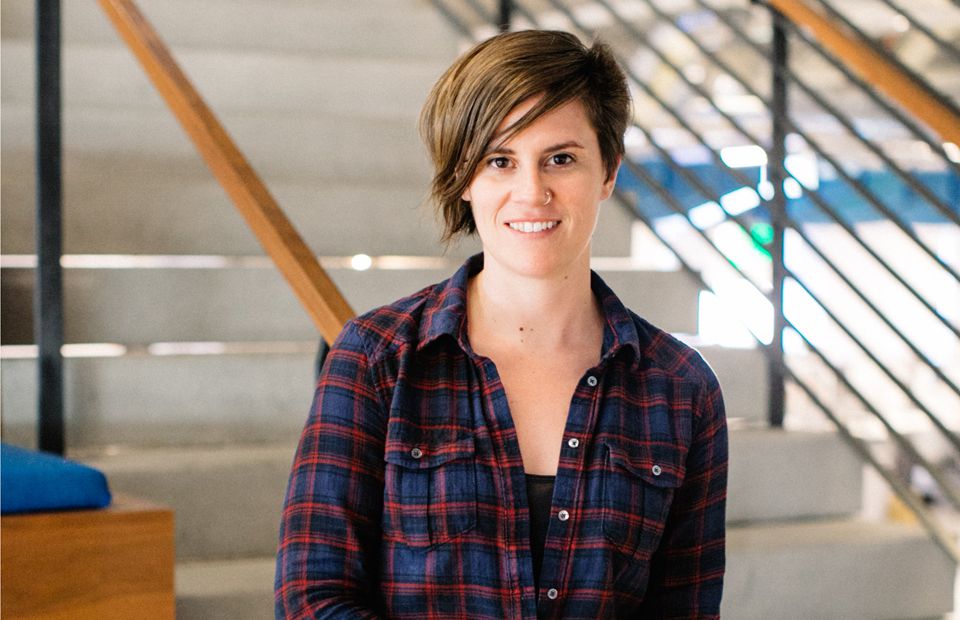
Media
How to Use Positive Reinforcement at Work—and Other Advice from a Pandora PM
"My advice to anyone who wants to get into product management is: check your ego at the door."
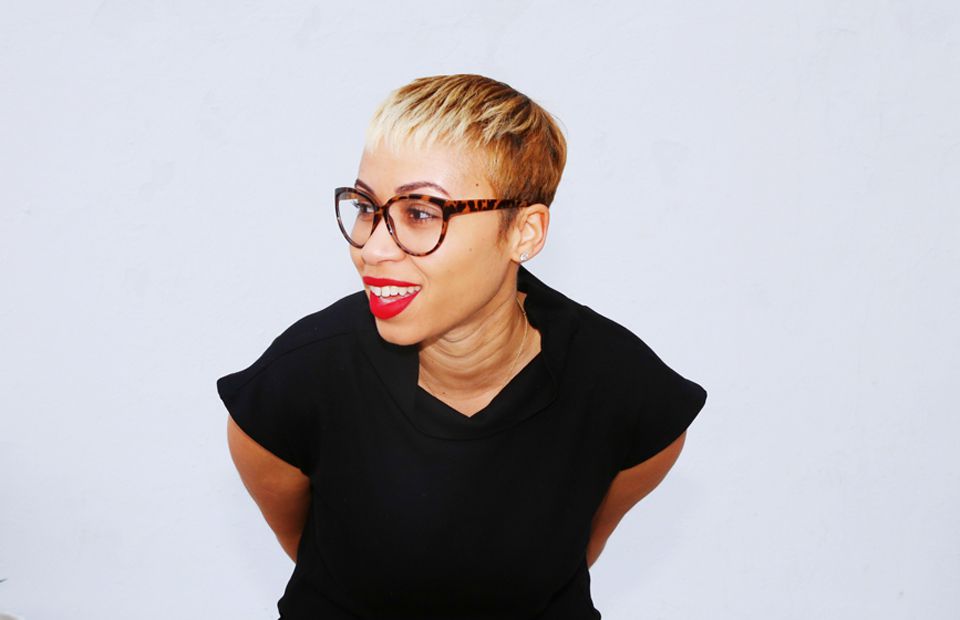
Media, Communications + Public Relations
How to Take Risks, Make a Switch, and Find a Career You Love—From a Woman Who's Done It 4 Times
Making your wildest dreams come true starts with understanding yourself—and Ahyiana Angel can help.
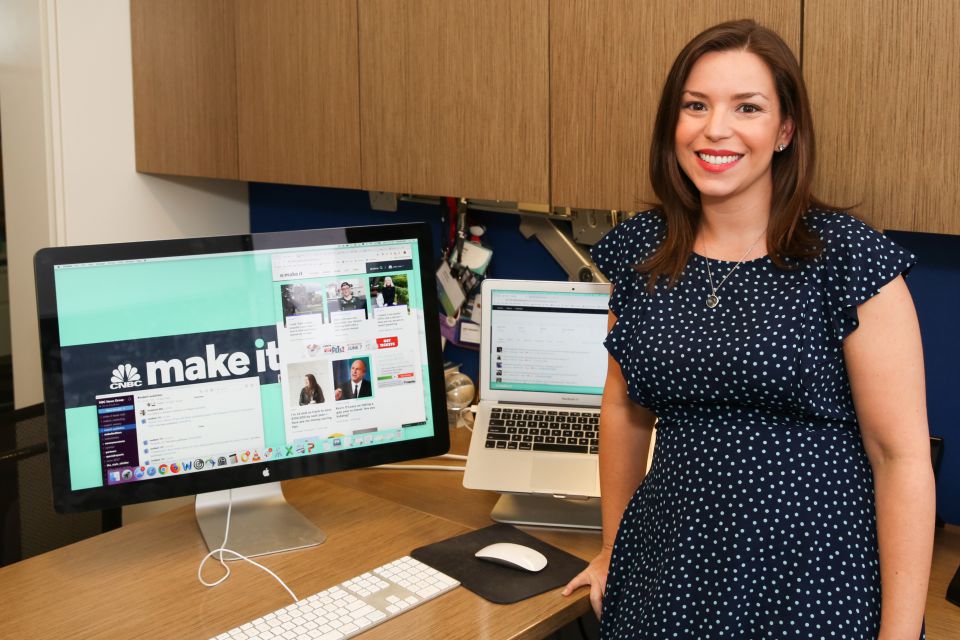
Communications + Public Relations
Creating Content That Empowers Audiences with CNBC's Digital VP and Managing Editor
This week, we interviewed Jenna Goudreau, the VP and managing editor of CNBC Digital. Let's learn how she keeps her powerhouse content creation machine going.
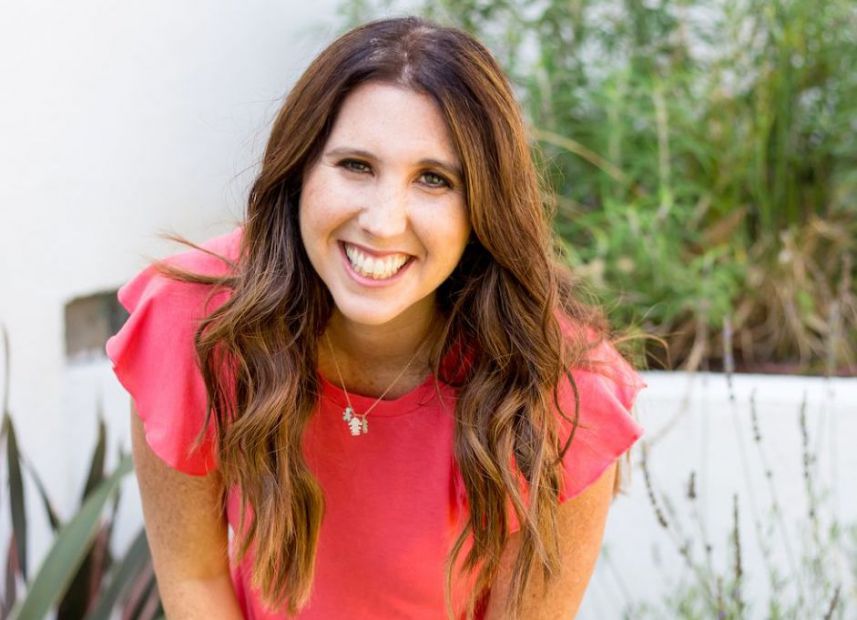
Entertainment
Working Creatively From Home with Cathy Heller
Cathy Heller is a singer, songwriter, entrepreneur, mother—and now, an author. Determined to lift others up to the "happiest versions of themselves," this queen of the hyphenated job title, leads by example. She shared how to build a fulfilling career in a creative field—all while working from home.
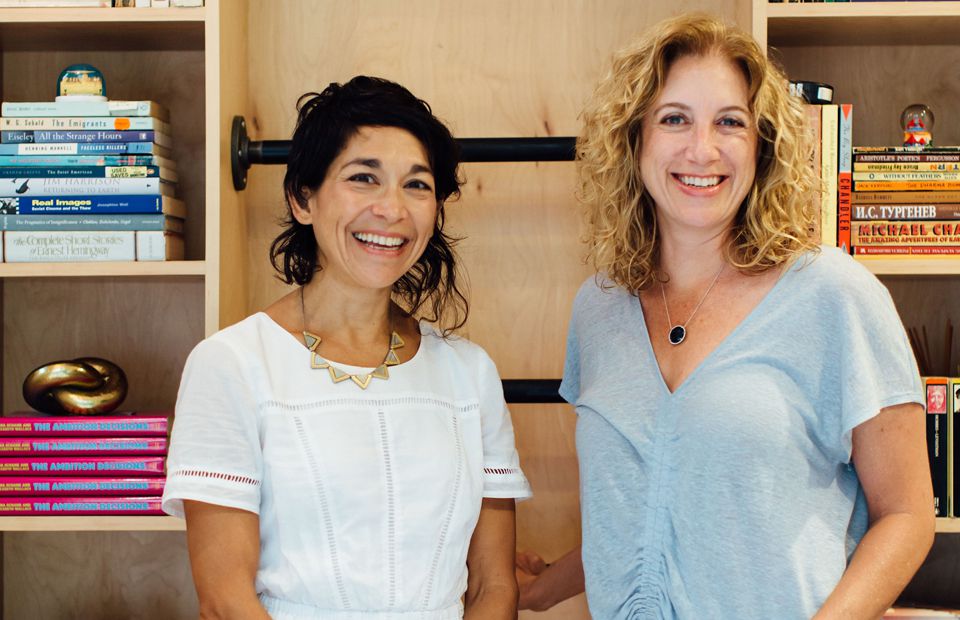
Media
Women, Work, and What It's Like to Write With Your Best Friend—From the Authors of The Ambition Decisions
"We should all give ourselves permission to challenge the things we think can’t be challenged."
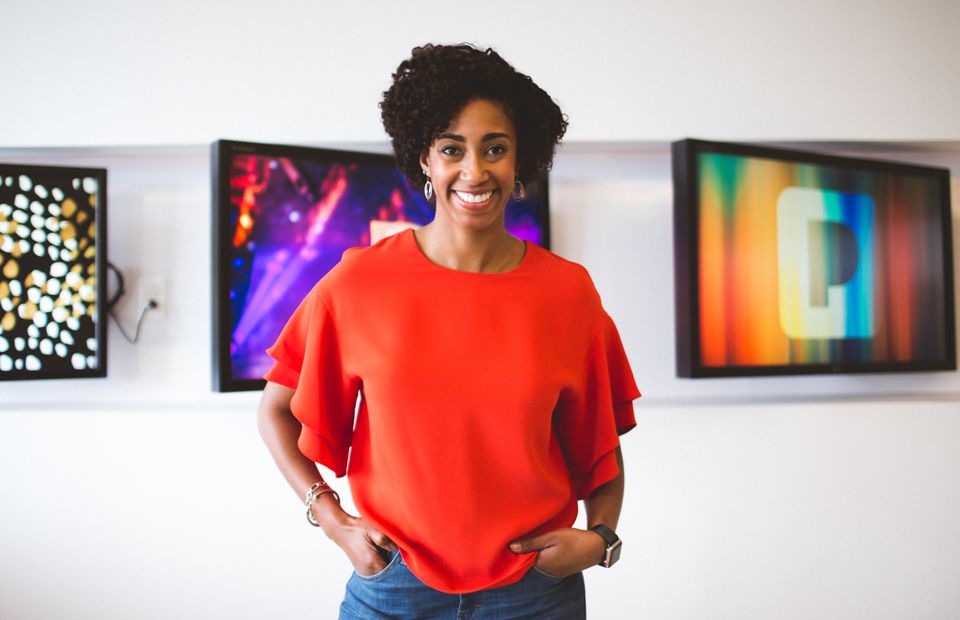
Media
A Director at Pandora on Staying Present, Celebrating Others, and Learning From Failure
"Share your wins, but most importantly, share what your growth areas are, share when you fail, share how you bounced back."
Get the Best Career Advice Delivered To Your Inbox
Join our newsletter to stay in the loop.
